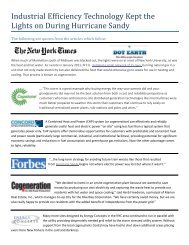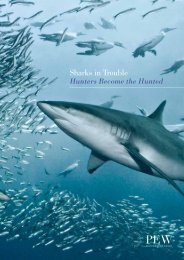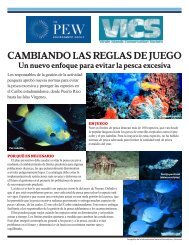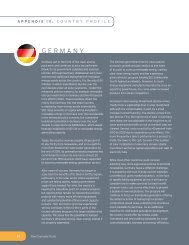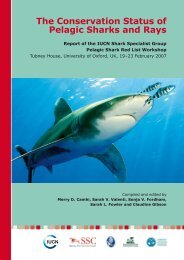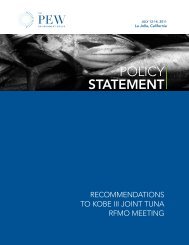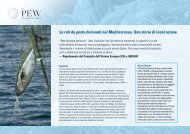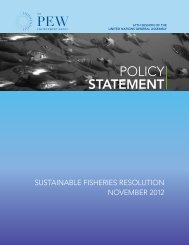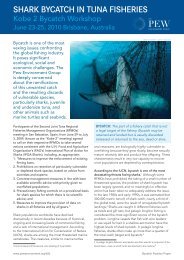The Law That's Saving American Fisheries - Ocean Conservancy
The Law That's Saving American Fisheries - Ocean Conservancy
The Law That's Saving American Fisheries - Ocean Conservancy
Create successful ePaper yourself
Turn your PDF publications into a flip-book with our unique Google optimized e-Paper software.
Glen Libby, who fishes out of Port Clyde, took this approach: “It was either make this work or quit,<br />
and I’m too stubborn to quit.”<br />
Raviya Ismail/EARTHJustice<br />
Glen Libby<br />
Port Clyde: <strong>The</strong> little port that could—and still can<br />
Decades after the collapse of New England’s top fish<br />
populations, including cod and flounder, only a<br />
few communities continue the region’s rich fishing<br />
tradition. <strong>The</strong> tiny enclave of Port Clyde in Maine is one of<br />
them, and Glen Libby is a reason. “It was either make this<br />
work or quit, and I’m too stubborn to quit,” he says. Libby<br />
has been fishing for groundfish and shrimp out of Port<br />
Clyde for almost 40 years. His father fished there before<br />
him, and his brother Gary and son Justin have followed the<br />
family tradition.<br />
Libby’s humility aside, credit Port Clyde’s survival to more<br />
than stubbornness. Libby and his peers have learned to<br />
deal with hardship, creating opportunities amid a legacy of<br />
beaten-down fish stocks.<br />
A former member of the New England Fishery<br />
Management Council, Libby helped found the Maine<br />
Coast Fishermen’s Association, which has rallied the<br />
tenacious few remaining draggers in Port Clyde and other<br />
small ports to find ways of adapting. Inventive and determined,<br />
fishermen in this port are using the tools afforded<br />
them under the Magnuson-Stevens Act to earn a sustainable<br />
living, including:<br />
Trimming operating costs with fuel-saving practices,<br />
and honing their fishing methods to target available fish<br />
stocks while avoiding depleted ones.<br />
Taking advantage of less-hectic fishing schedules under<br />
New England’s recently developed “sectors” system.<br />
Embracing risk-management techniques from other<br />
industries by creating a bycatch risk pool. (A net full of<br />
fish the fishermen have no quota to catch, known as a<br />
“catastrophic tow,” could bring hefty costs or even shut<br />
them down.)<br />
Cultivating customers who pay more for the fish. One<br />
early marketing innovation was allowing consumers to<br />
buy seafood by subscription via community-supported<br />
<strong>The</strong> <strong>Law</strong> That’s <strong>Saving</strong> <strong>American</strong> <strong>Fisheries</strong>: <strong>The</strong> Magnuson-Stevens Fishery Conservation and Management Act 25



